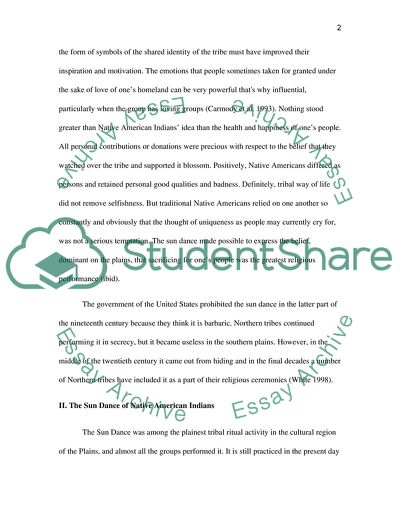Cite this document
(Native American Sun Dance: Communication with the Spiritual World Essay Example | Topics and Well Written Essays - 1250 words, n.d.)
Native American Sun Dance: Communication with the Spiritual World Essay Example | Topics and Well Written Essays - 1250 words. https://studentshare.org/culture/1718664-sun-dance-you-can-come-up-with-more-specific-title
Native American Sun Dance: Communication with the Spiritual World Essay Example | Topics and Well Written Essays - 1250 words. https://studentshare.org/culture/1718664-sun-dance-you-can-come-up-with-more-specific-title
(Native American Sun Dance: Communication With the Spiritual World Essay Example | Topics and Well Written Essays - 1250 Words)
Native American Sun Dance: Communication With the Spiritual World Essay Example | Topics and Well Written Essays - 1250 Words. https://studentshare.org/culture/1718664-sun-dance-you-can-come-up-with-more-specific-title.
Native American Sun Dance: Communication With the Spiritual World Essay Example | Topics and Well Written Essays - 1250 Words. https://studentshare.org/culture/1718664-sun-dance-you-can-come-up-with-more-specific-title.
“Native American Sun Dance: Communication With the Spiritual World Essay Example | Topics and Well Written Essays - 1250 Words”. https://studentshare.org/culture/1718664-sun-dance-you-can-come-up-with-more-specific-title.


